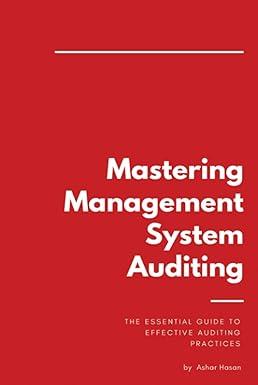Question
VOCAB! HELP Acronym used for the 8 wastes identified by advocates of lean thinking Costs incurred to avoid producing poor-quality goods or services Raw materials
VOCAB! HELP
|
|
Step by Step Solution
There are 3 Steps involved in it
Step: 1

Get Instant Access to Expert-Tailored Solutions
See step-by-step solutions with expert insights and AI powered tools for academic success
Step: 2

Step: 3

Ace Your Homework with AI
Get the answers you need in no time with our AI-driven, step-by-step assistance
Get Started


